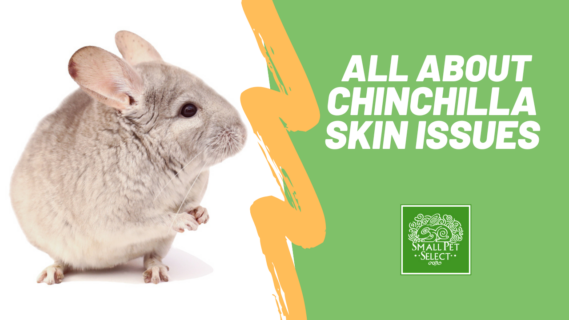As a chinchilla parent, nothing makes us feel more helpless than seeing our furry friends in distress. Chinchilla skin issues can quickly become a source of worry and stress for parents.
Whether it's watching your chinchilla scratch incessantly or seeing the telltale signs of infection or irritation, it’s always an emotional rollercoaster to see your pet show signs of suffering.
Luckily there are practical solutions available to help soothe and manage skin issues in your furry friend. From proper hygiene to a healthy diet and appropriate bedding, there are many steps you can take to ensure your chinchilla's skin stays healthy.
By providing your chinchilla with the right care, you can help them avoid skin issues altogether, or treat them before they become more severe.
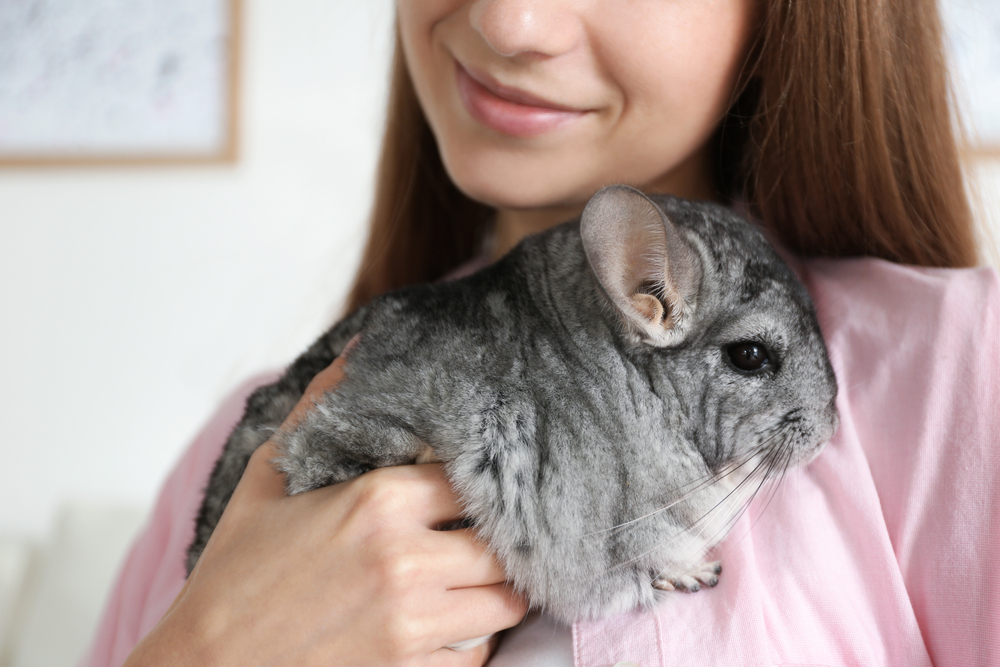
How To Tell If You’re Dealing With Chinchilla Skin Issues
If your chinchilla is ever straying from their normal behavior then this is a reason to be concerned and check with your exotic vet. This goes for chinchilla skin issues too!
If your chinchilla’s fur or skin ever looks or feels different then contact your exotic vet to get it looked at. Some things to be on the lookout for are:
patches of hair loss
dry and flakey skin
crusty or scaly skin
If you notice any of these symptoms then you need to get your chinchilla checked out. Ringworm is a very common skin infection for chinchillas.
A veterinarian can officially diagnose ringworm after testing the skin or having a lab run DNA tests on the hair to see if the fungus is present.
How Chinchilla Skin Issues Are Treated
A mild infection can be treated with a topical prescription applied to the areas where you have chinchilla skin issues. If the infection is severe the chinchilla may need long-term treatment with oral medications as well.
You’ll also need to be very thorough and clean all areas that the chinchilla has been in contact with. You don’t want any infected hair left behind to re-infect your chin or any other animal (or people!).
Does Hair Grow Back After An Infection?
Yes! Chinchillas will regrow their hair and there are usually no long-term issues with hair growth. However, it can take several months before the hair grows back.
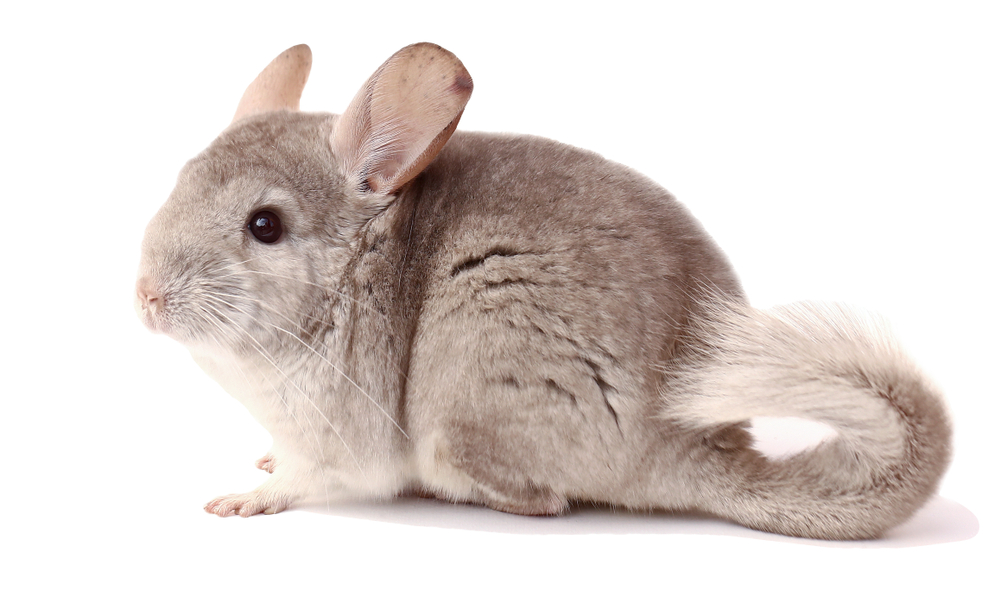
How To Prevent Chinchilla Skin Issues
The cause of almost all chinchilla skin issues is moisture. Moisture is such a big deal for chinchillas because their fur is so thick! The thick layer of fur traps moisture and prevents the skin from drying properly.
This trapped moisture leads to a skin infection or skin inflammation. This is why it’s so important not to let your chinchilla get wet. And to keep their environment as dry as possible!
Chinchilla Care and Grooming
Chinchillas clean their face with their front paws and do a lot of their grooming on their own. If you have multiple chinchillas then you’ll see they like to groom each other.
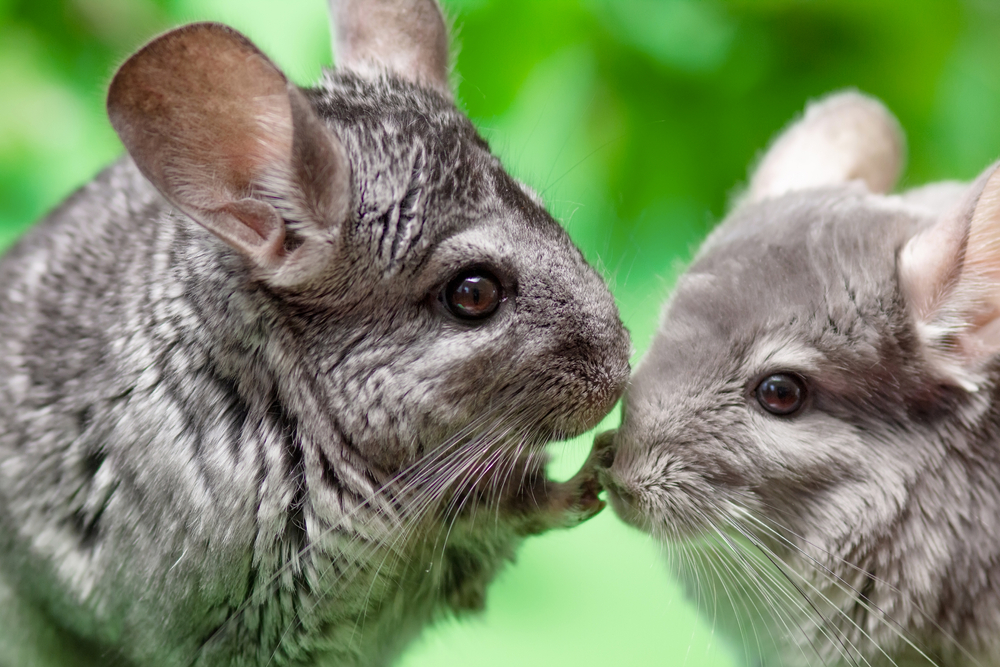
Don’t give your chinchilla water baths! They only need dust baths (more on that in a moment).
You don’t have to comb your chinchilla but it can be helpful to remove the fur that they’re shedding when in a particularly heavy shedding season. And it gives you a chance to get an up-close look at their skin to check for chinchilla skin issues.
You don’t need to worry about clipping your chinchilla’s nails. Their nails are so thin and fragile that they stay worn down on their own.
Dust Baths
Wild chinchillas live in the cool mountains and their native source of dust for dust baths is fine volcanic ash. They roll in ash that sticks to the oils and dirt in their coat and then falls off. A great way to take a bath when out in the cold!
Chinchillas secrete oil from their skin and without regular dust baths they can start to look quite greasy.
When it comes to domestic chinchillas they need to use sand/dust that was specifically mined and packaged for them. This is because dust can be problematic for chinchillas and can cause allergies. This is why you need to make sure what you’re using is the right consistency for your chinchilla.
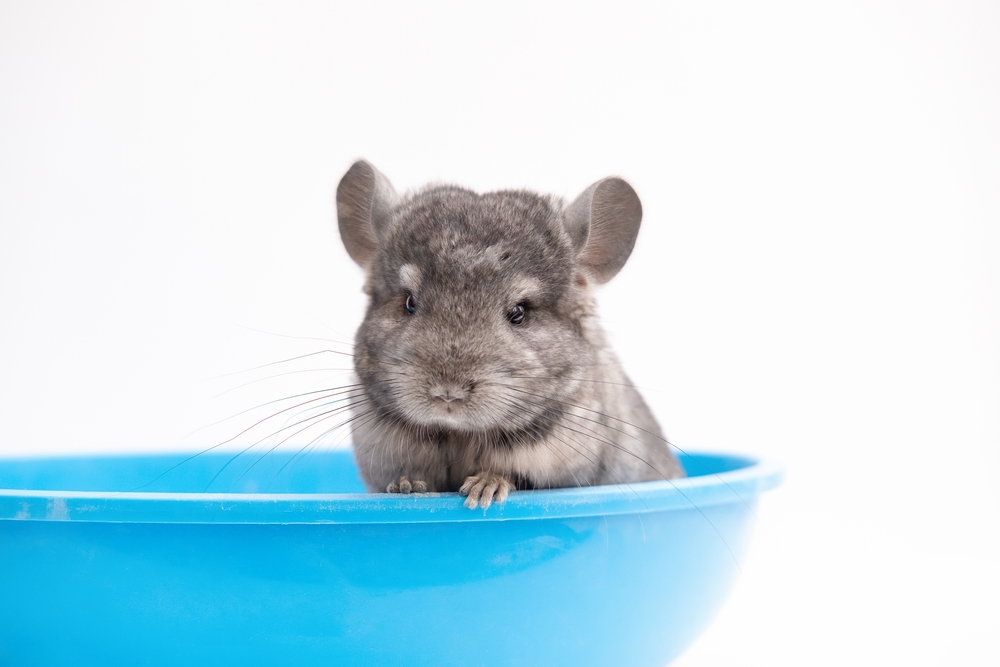
You also don’t want the dust bath available to your chinchilla all the time. You just want to have it out for them to take a bath in it.
For example, you could have it available for 30 minutes to an hour a few times a week. This way they aren’t breathing in the dust too much and they are less likely to use the dust bath as a litter box!
Having a dust bath available every other day (or at least twice a week) for 5-10 minutes is a good starting place. Then tweak depending on how your chinchilla’s skin and fur are doing.
Keeping the oils in check will help keep moisture away from your chinchilla’s skin and make chinchilla skin issues less likely.
Additionally, fur that hasn’t been cleaned in a dust bath is more likely to trap heat and chinchillas are very susceptible to heat stroke with their heavy coats. Oily fur gets heavy and matted easily.
Keeping Your Chinchilla’s Cage Clean and Dry
You need to do daily checks where you look over your chinchilla’s enclosure for any signs of issues. A little tidying up every day can go a long way in keeping your chinchilla’s space clean and dry.
Quality bedding goes a long way to absorb urine and keep everything as dry as possible in between cage cleanings.
Two options that work really well for chinchillas are Aspen Shavings Bedding and White Paper Pellet Bedding. These are both safe and effective options to help keep your chinchilla’s space clean and dry.
Healthy Chinchillas Are Happy Chinchillas
If a chinchilla is bored, they might start chewing their fur. Mental stimulation is so important for chinchilla care! They are very smart and want to explore.
Make sure you have plenty of chinchilla toys in their enclosure so they can fill their days with curiosity.
When a chinchilla is stressed they may lose chunks of fur. This is called fur-slip and it helps chinchillas in the wild escape from predators. Stress, anxiety, or being handled improperly can cause fur-slip.
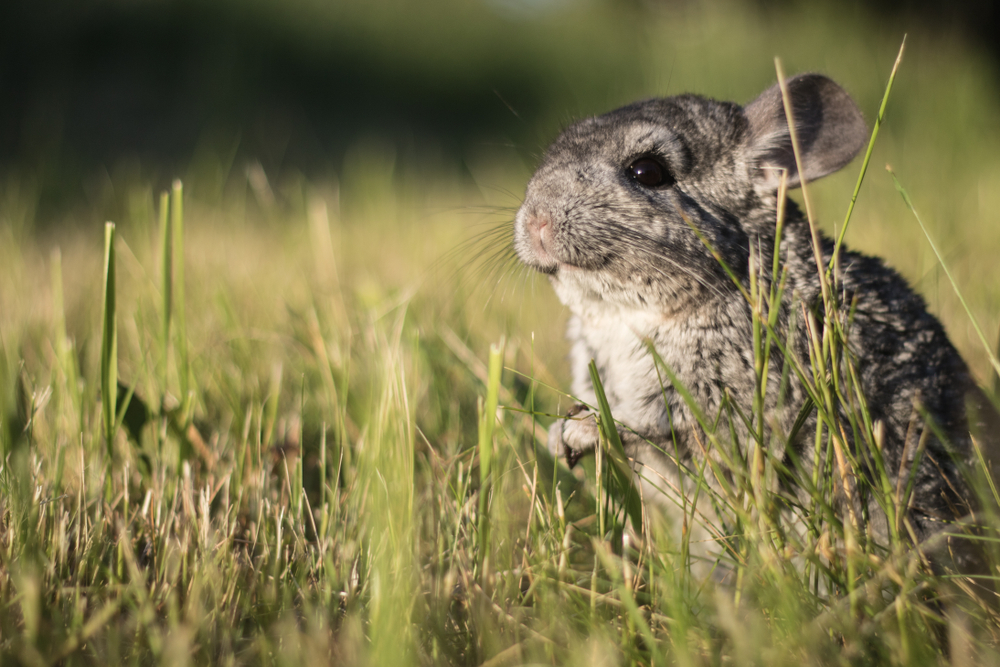
Dietary imbalances can also cause fur loss so if there are any concerns with your chinchilla’s fur take them to the vet!
Keeping your chinchilla’s environment fun and low-stress will do great things for their overall chinchilla health. Don’t forget to bond with your fur baby and give them a goji berry for being the best chinchilla in the world. Love goes a long way.
Chinchilla research is continuously growing! If you have any doubts or concerns contact your exotic vet.
We are not veterinarians, and none of our information should be construed as veterinary advice.



